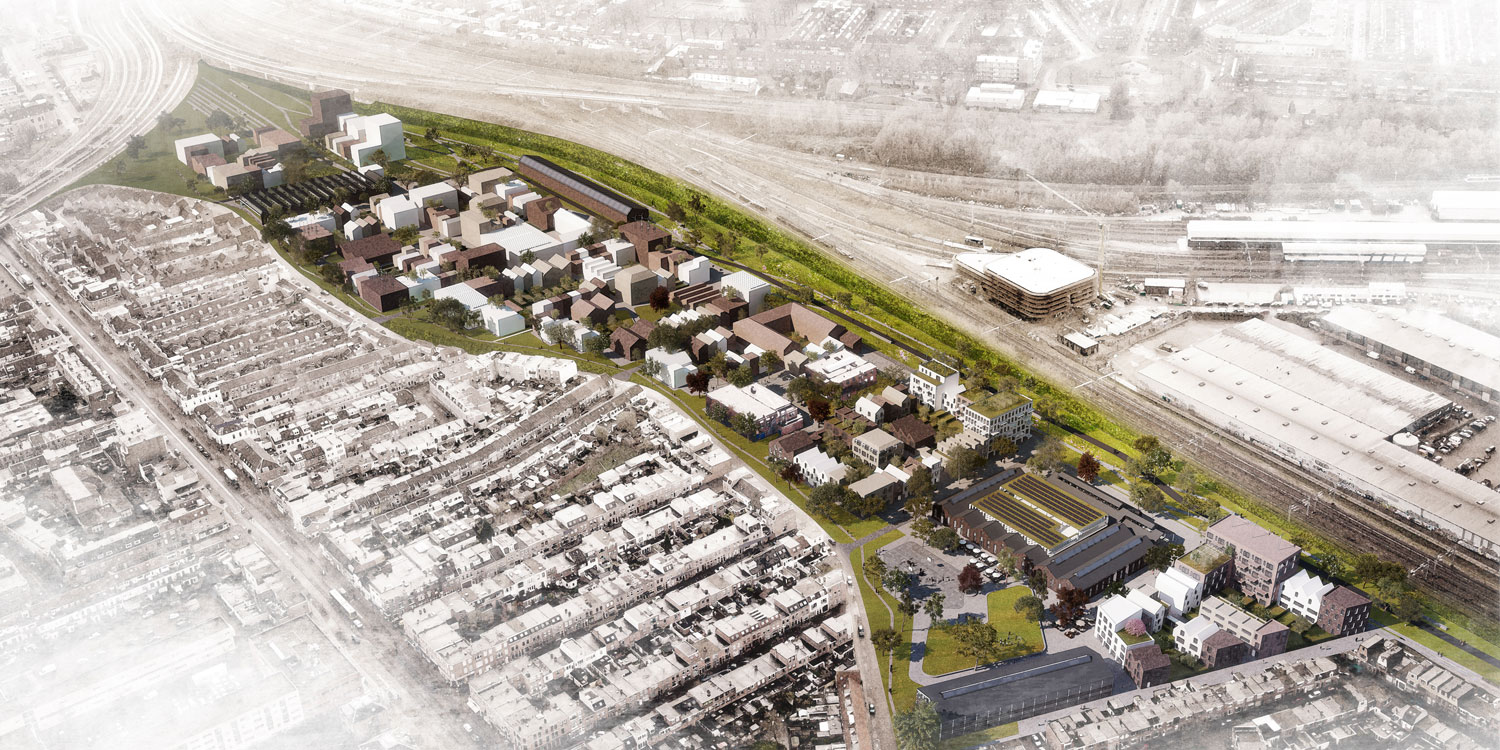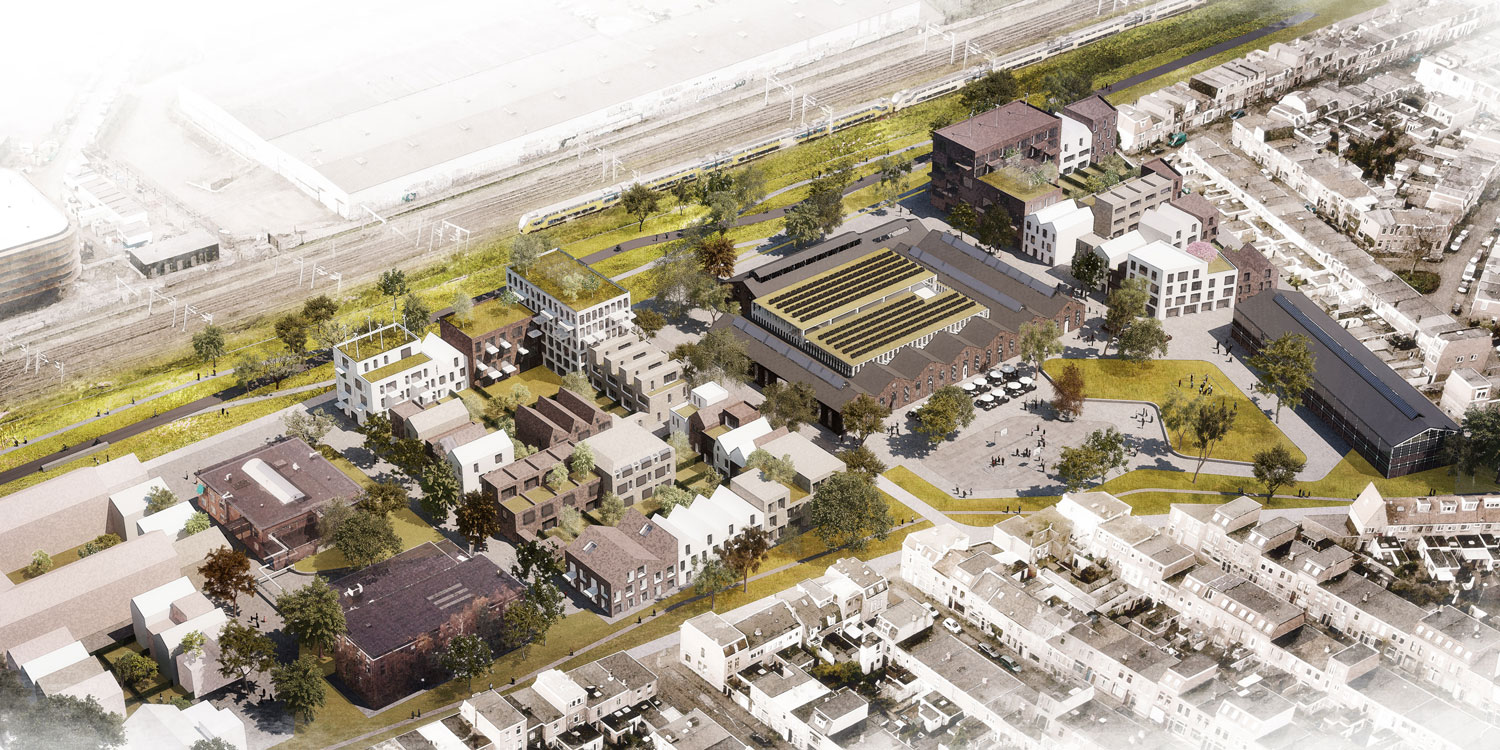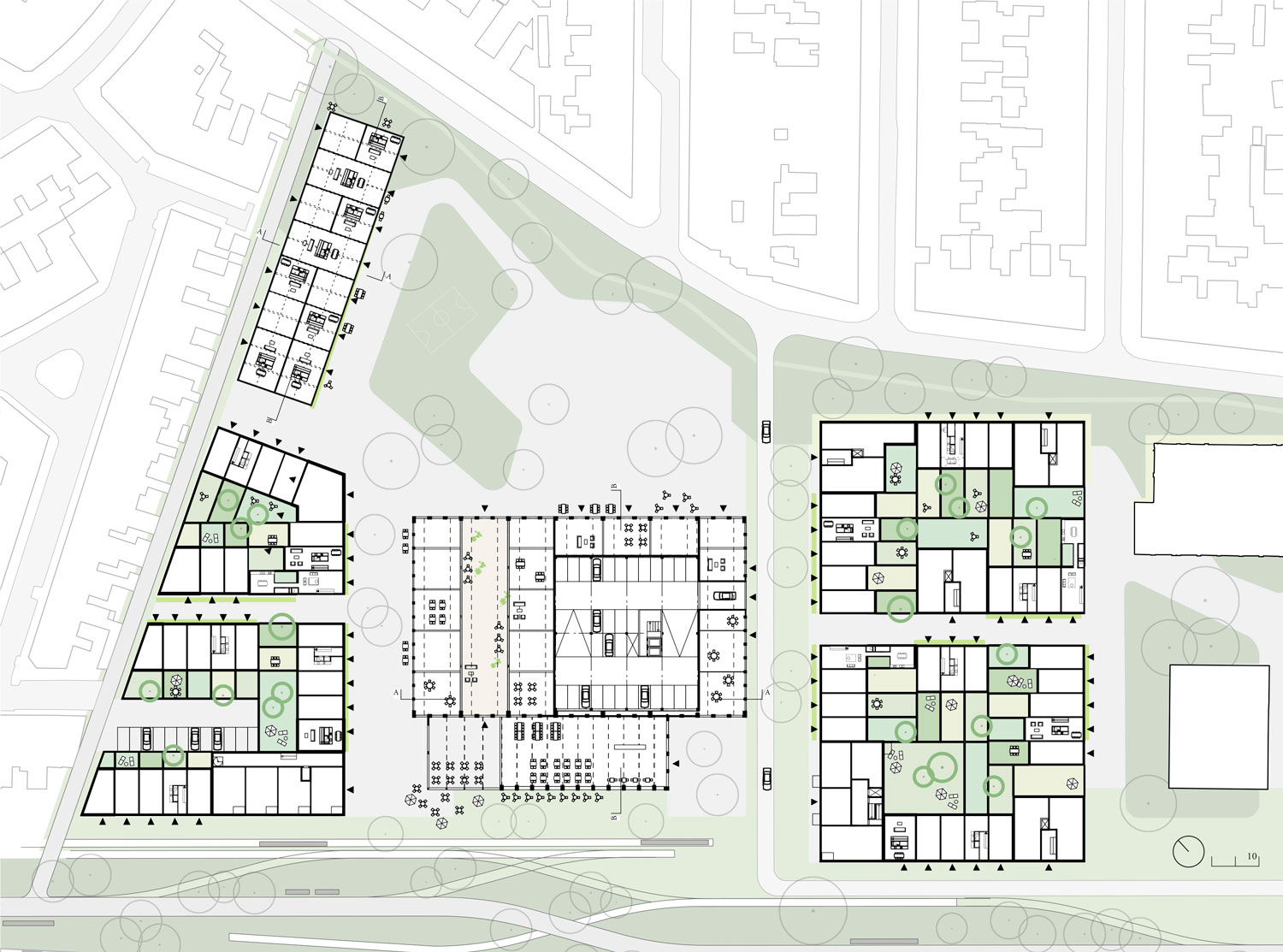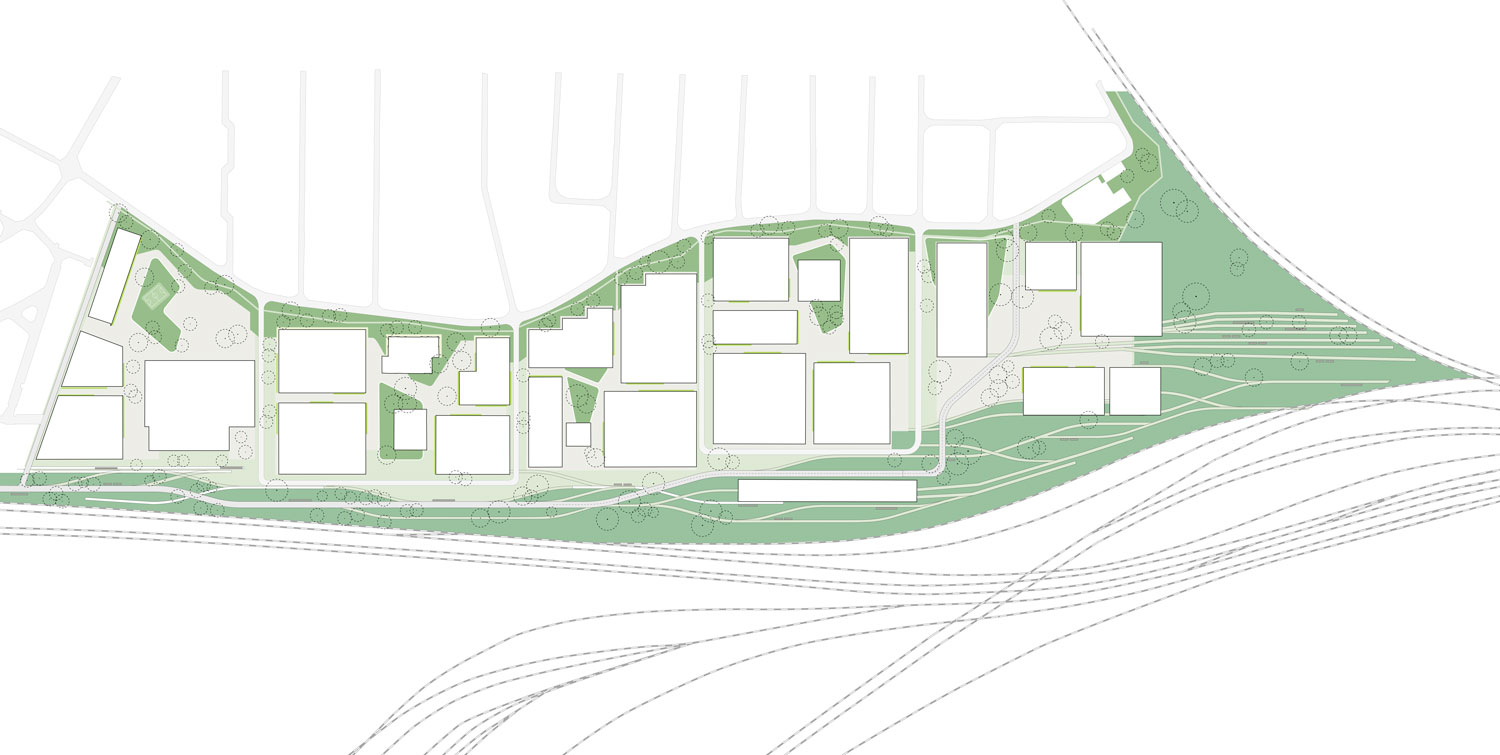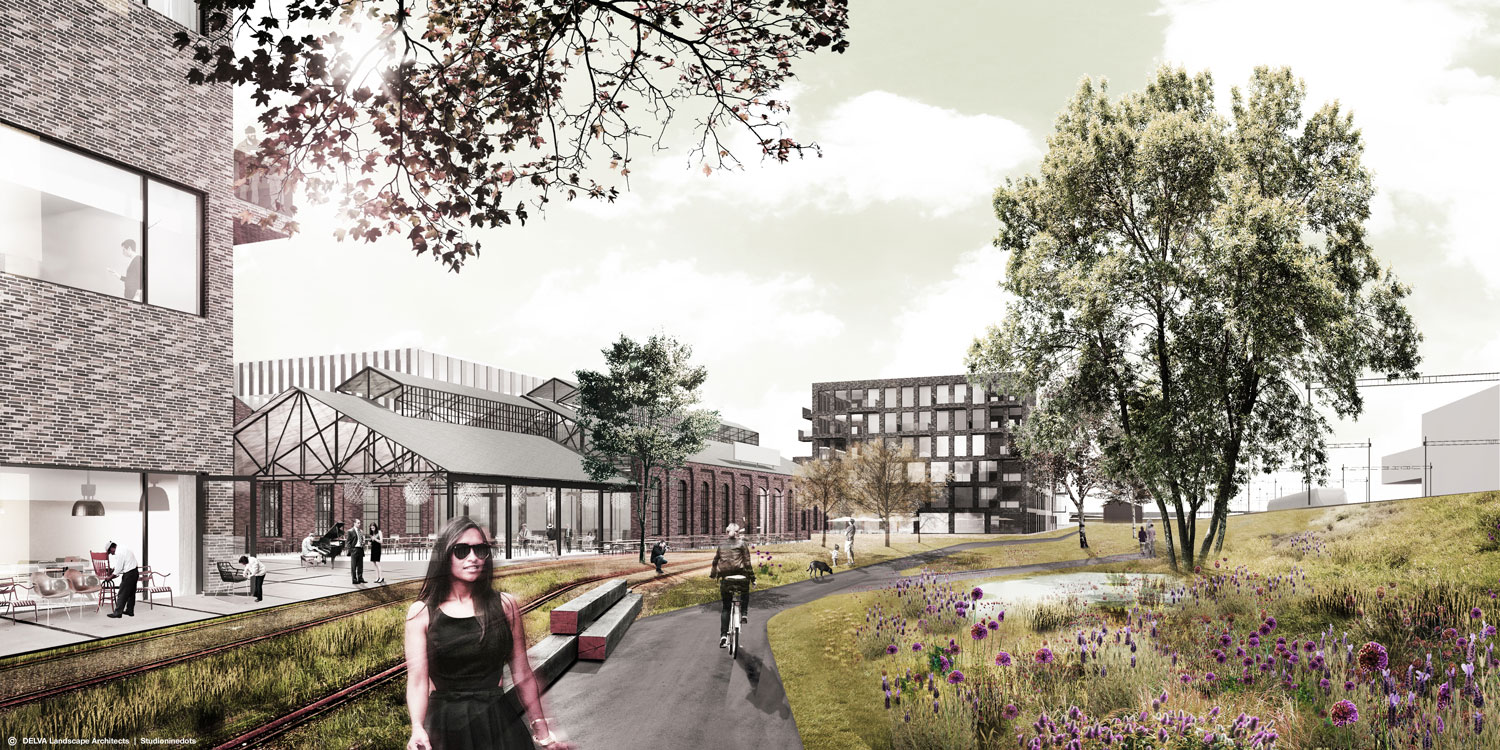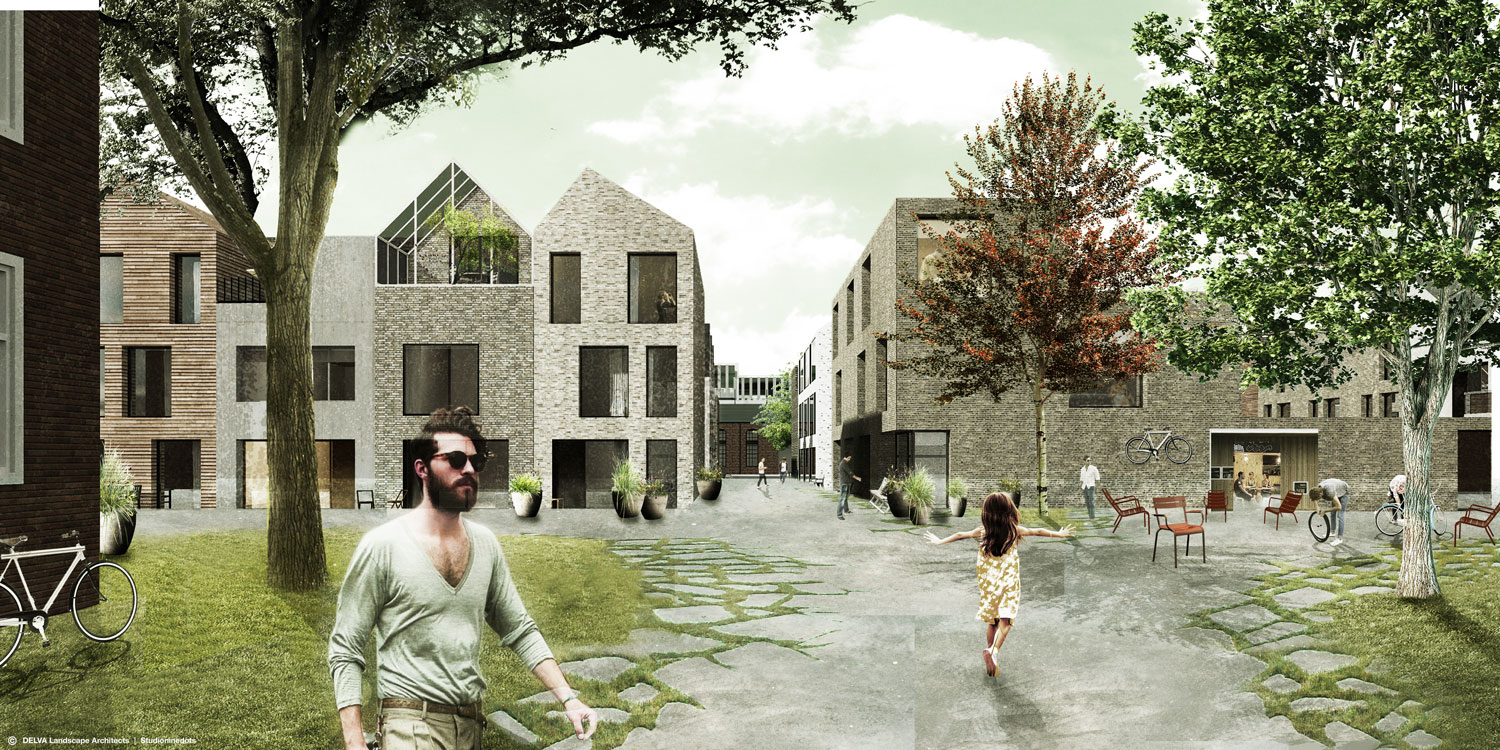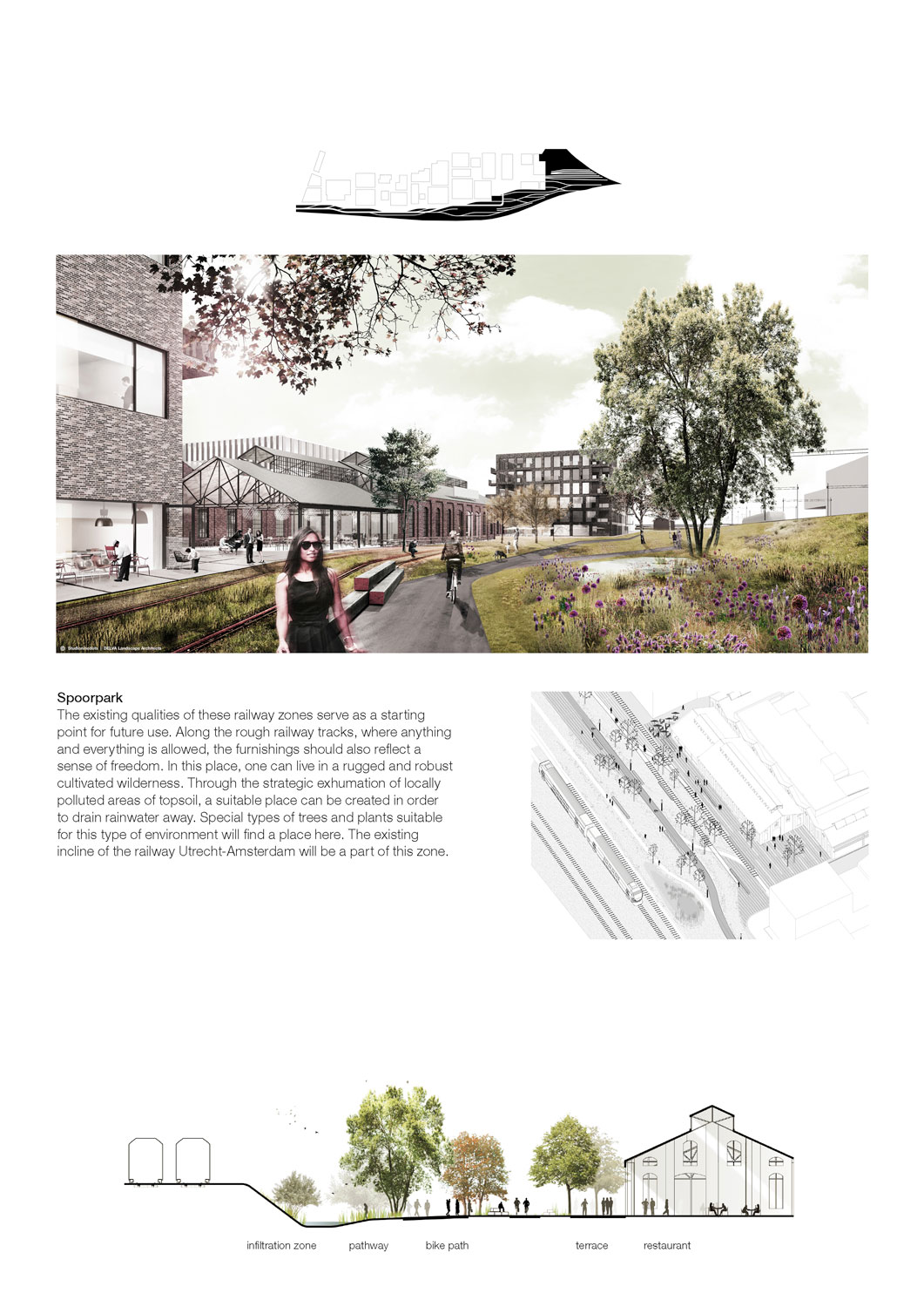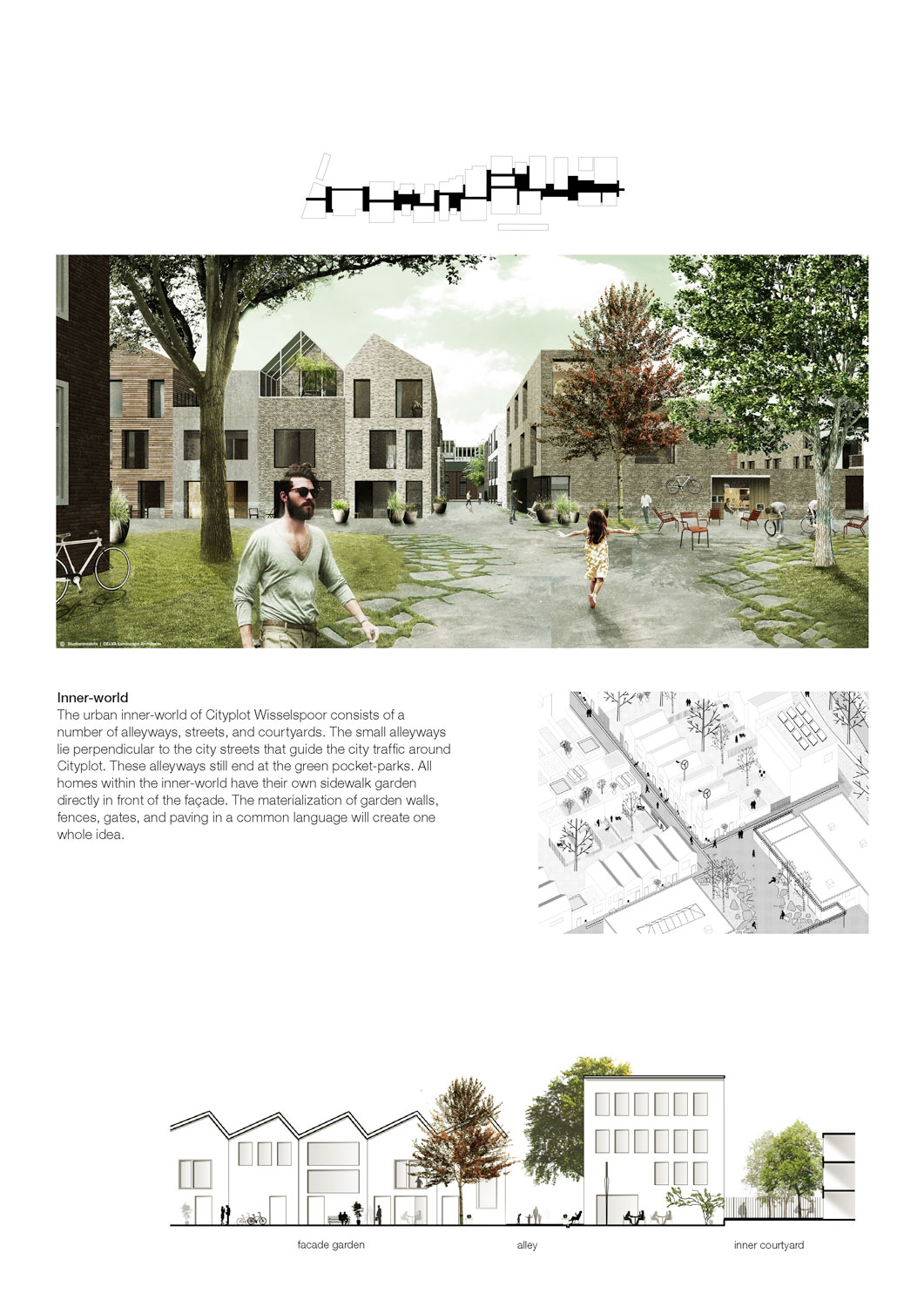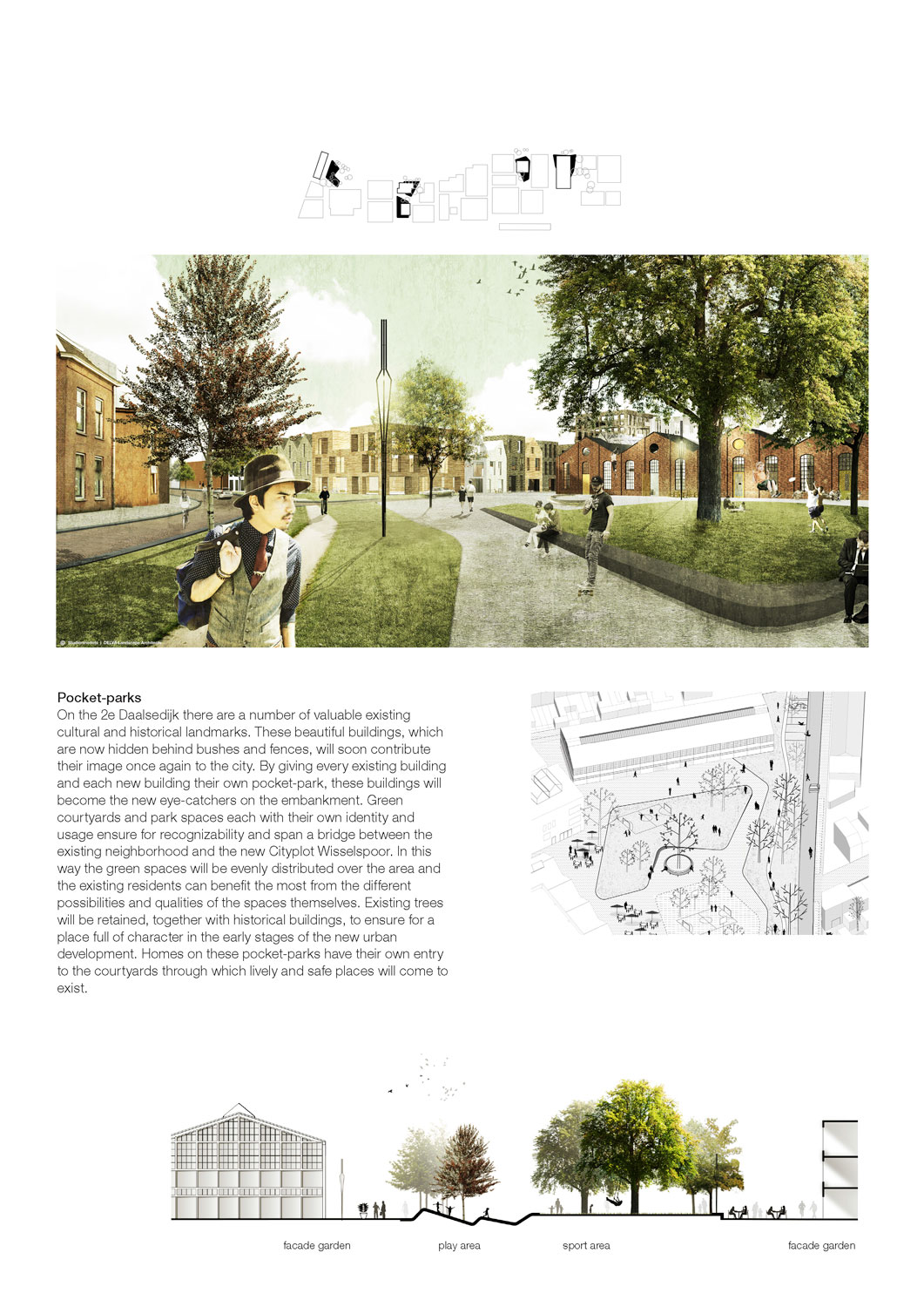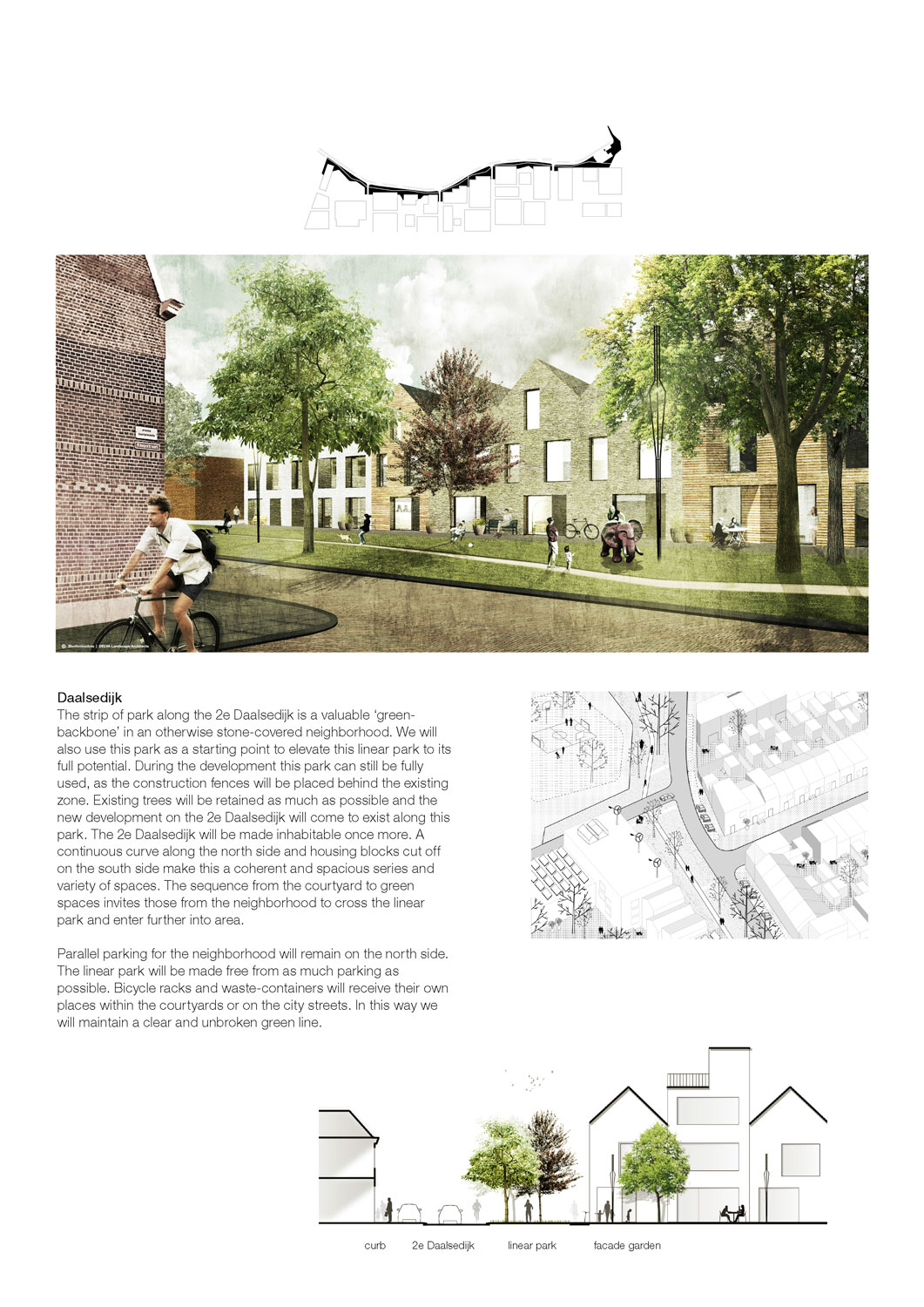1213-DLA-NL-2015
Client: Unknown
Status: Competition (2015)
Clasification: 1 prize
Location: Utrech, Netherlands
Coordinates: 52.1000098,5.1020855
Climate: Oceanic / maritime, Temperate
Material: Brick
Environment: Urban
Visualizer: Studio
Scale: Extralarge
Types: Masterplan, Public space
The Royal Dutch Factory for vehicles and railway equipment, otherwise known as Werkspoor, was founded in 1828. With 5000 strong, this company was the largest employer in Utrecht. The company was internationally known for their trains of indestructible quality and proud staff. This pride is still there and the memory remains through the existing industrial buildings that remain. We will build upon the existing industrial character and ‘local heroes’ and contribute an exiting and comfortable urban community. With Wisselspoor we submit the link to the past and make a creative and surprising place where Utrecht can be proud of.
Concept Cityplot
People are searching for neighborhoods that have their own character and also allow for the possibility to have a say in how their surroundings further grow and develop. Furthermore the future is unpredictable. This calls for a new kind of urban planning; or rather, an entire new way for how cities can grow into existence. Cityplot is founded without a preconceived end-product, but rather from the idea of creating a flexible and individual development. The plan is not predetermined but is dependent on the initiatives that will be set in motion at the moment that the transformation begins. From a ‘plot’ way of thinking, different building forms and functions will be possible. In this way, flexible and sustainable solutions can be created based on specific demands, and create diverse environments with unique identities.
Stepped public space
The urban life in Cityplot does not stop at ground level, but strives towards raised collective gardens and surrounding rooftops. Public, semi-public, and private spaces alternate with each other and contribute to the creation of a circular city. Height differences will be exploited in order to give form to transition spaces. Fences will not be seen as hard barriers, but embraced as identity-defining elements of the plan. Walls, fences, and raised elements create a dynamic contrast between the open-closed, and public-private spaces.
Park spaces for the city
The most important parks of Utrecht lie in a ring with a span of nearly 1.5 kilometers around the site plan. We see a unique chance to add to this existing language of parks. In the eastern-most point of the site plan it is possible to develop one of the most central lying parks in the entire city. This cultural park, together with a new-use program will be a new beautiful addition to the city.
The offering of green-spaces will be finished off by the green pocket-parks devised in a linear ‘green-zone’ situated along the 2e Daalsedijk and functionally serve the neighborhood. The southern portion of the site will have a green railway zone that has its own character and qualities. In total there will be four unique environments that will be created for living and working.
Four anchoring environments
‘Wisselspoor’ will gradually transform into a mixed living-working environment. The plan is not predetermined but is dependent on the initiatives that will be set in motion at the moment that the transformation begins. We will build upon the existing industrial character and local quartermasters and contribute an exciting and comfortable community to the city. Four urban environments ensure a complexity and layering of the public spaces in ‘Wisselspoor’ which is what makes the area so attractive. The contrast between the urban park and intimate streets, courtyards, and inner courtyards. The inheritance and integration of the strong railway history together with a modern cultural and business lifestyle adds a fresh type of borough with a strong identity to the city.


